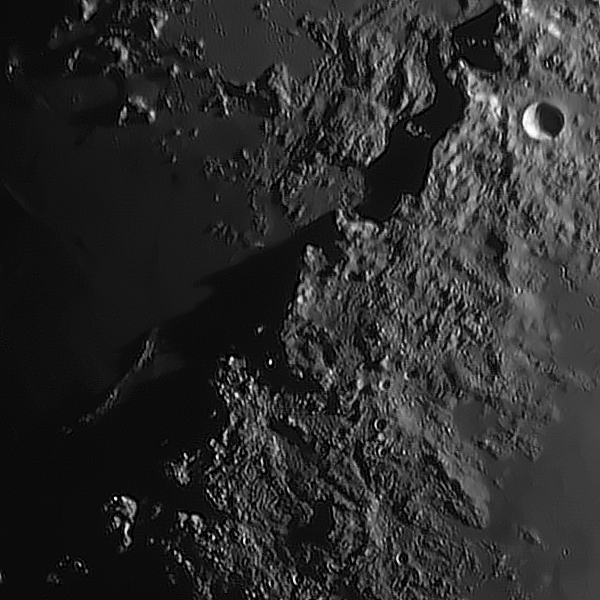April 15, 2012
A Thick Pile of Debris
image by Alexander N. Zaitsev, Lipetsk, Russia
Like an accordian, Alexander's gif images cycle back and forth, as if an inconstant Sun couldn't decide whether to rise or set. But ignore the shifting shadows and focus on the Apennines themselves. The low lighting catches bright glints from many different boulders - actually mountains - that were thrown out of the impact-excavated hole that became the Imbrium impact basin. A study in the 1970s estimated that for small impact craters roughly half of the crater rim height was due to ejecta fallback and the other half was rebound of the edge of the hole. Wildly extrapolating this to Imbrium suggests that about a 2 to 2.5 km thickness of the Apennine front - the tallest peaks of the scarp - is fallback. Note the 3 or 4 roundish depressions and arcs is the backslope of the Apennines - these may be pre-Imbrium craters that were inundated and mostly obliterated by fallback.
Chuck Wood
Technical Details
2009/05/02 Time:18:50 UT. Telescope TAL 200K + Camera VAC-135 (b/w 15 fps) with the red filter and barlow 2X; Registax 6, Photoshop.
Related Links
Rükl plate 22
COMMENTS?
Click on this icon File:PostIcon.jpg at the upper right to post a comment.




